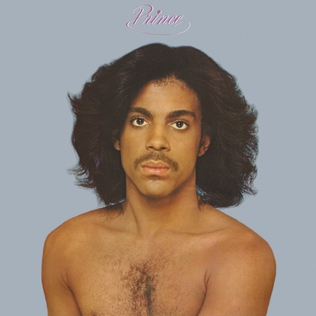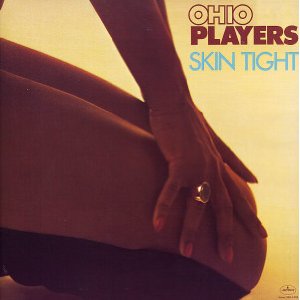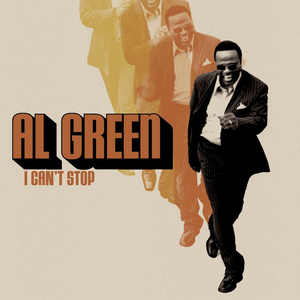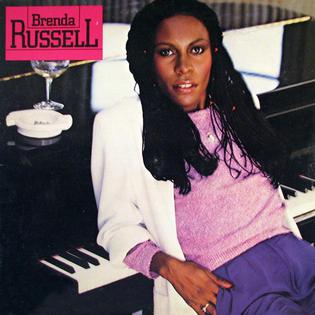
Good Old Boys is the fourth studio album by American musician Randy Newman, released on September 10, 1974 on Reprise Records, catalogue number 2193. It was Newman's first album to obtain major commercial success, peaking at number 36 on the Billboard 200 and number 58 in Canada. The premiere live performance of the album took place on October 5, 1974, at the Symphony Hall in Atlanta, Georgia, with guest Ry Cooder and Newman conducting the Atlanta Symphony Orchestra.

For You is the debut studio album by the American singer-songwriter Prince. It was released by Warner Bros. Records on April 7, 1978. All tracks were produced, arranged, composed, and performed by Prince. Prince started recording in September 1977 at Sound 80 in Minneapolis, Minnesota, where he had previously made a demo. Friend and producer David Rivkin provided advice and engineering assistance.

The Bride Stripped Bare is the fifth solo studio album by English singer Bryan Ferry. It was released in 1978, shortly before Ferry reconvened his band Roxy Music which had been on hiatus for three years. It was recorded after his girlfriend Jerry Hall left him for Mick Jagger in 1977, and appears to contain references to their break-up. The album peaked at number 13 on the albums chart in the United Kingdom.

Prince is the second studio album by the American musician Prince. It was released on October 19, 1979, by Warner Bros. Records. The album was written, arranged, composed, produced and performed entirely by Prince. Overall, Prince was regarded as more diverse than For You (1978), and performed better critically and commercially. Reviewing in Christgau's Record Guide: Rock Albums of the Seventies (1981), Robert Christgau wrote: "This boy is going to be a big star, and he deserves it".

Fire It Up is the third studio album by American musician Rick James. It was released on October 16, 1979, on the Motown sub-label Gordy Records. The first single was "Love Gun". The album has sold more than a million copies.

L.A. Is My Lady is the fifty-seventh and final solo studio album by American singer Frank Sinatra, released in 1984 and produced by Quincy Jones. While the album was Sinatra's last, he recorded five further songs, only four of which have been officially released.

Fulfillingness' First Finale is the seventeenth studio album by American singer-songwriter, musician, and record producer Stevie Wonder, released on July 22, 1974 by Tamla, a subsidiary of Motown Records. It is the fourth of five albums from what is considered Wonder's "classic period".

Al Green Explores Your Mind is the eighth album by soul singer Al Green. Unlike previous Al Green albums, this album featured only one major hit, the U.S. No. 7 hit "Sha-La-La ", but did contain the original version of "Take Me to the River", a song which went to No. 26 on the Billboard chart when covered by Talking Heads in 1978. In 2004, the song "Take Me to the River" was ranked number 117 on Rolling Stone's list of the 500 greatest songs of all time.

Live 1976–1977 is the sixth album of the bassist Stanley Clarke. This is his first live album.

Baby It's Me is the eighth studio album by American singer Diana Ross, released on September 16, 1977, by Motown Records. It peaked at No. 18 on the Billboard Top 200 and No. 7 on the R&B album chart. The album was produced by producer Richard Perry. The LP yielded one top 40 hit, "Gettin' Ready for Love", reaching number 27 on the US Billboard Hot 100. Other charting singles released from the album include "You Got It" and "Your Love Is So Good for Me", the latter receiving a Grammy nomination.

Central Heating is the second studio album by funk-disco band Heatwave. It was released in 1977 on the GTO label in the UK and in 1978 on the Epic label in the US. It was produced by Barry Blue. Central Heating sold more than a million copies in its first two years of release.

Skin Tight is the fifth studio album by the Ohio Players, released in April 1974. It is their first album released through the Mercury label, and considered to be their commercial breakthrough.

Sleeper Catcher is the fourth studio album by the Little River Band, released in April 1978. It peaked at No. 4 on the Australian Kent Music Report Albums Chart and No. 16 on the Billboard 200. The album was certified Platinum by the RIAA in May 1979.

Lazy Afternoon is the seventh studio album by American singer Regina Belle. It was released by Peak Records on July 13, 2004, in the United States. The album is a collection of jazz, soul, and pop standards. It peaked at number 9 on the Billboard Top Contemporary Jazz chart and number 58 on the magazine's Top R&B/Hip-Hop Albums. Belle's rendition of the Isley Brothers song "For the Love of You" served as the album's lead single. "Fly Me to the Moon" and "If I Ruled the World" each received some airplay but did not chart.

Luxury You Can Afford is the seventh studio album by Joe Cocker, released in 1978 on Asylum Records, his only release for that label.

I Can't Stop is the 27th studio album by American soul singer Al Green. It was released by Blue Note Records on November 17, 2003, in the United Kingdom and on November 18 in the United States. Produced by Willie Mitchell, the album was Green's first since 1995, his first for Blue Note, and his first collaboration with Mitchell since 1985's He Is the Light; it was also Green's first entirely secular recording since the 1970s.

Brenda Russell is the self-titled debut studio album by American singer-songwriter Brenda Russell, released on 25 July 1979 by A&M Records on the Horizon label. The album peaked at No. 20 on the Billboard R&B albums chart.

Heads is the fifth album by the jazz musician Bob James, released in October 1977. It was his first album released on his newly formed Tappan Zee label, which was distributed by Columbia Records. All of his Tappan Zee albums are distributed by E1 Music. The album reached number one on the Billboard Jazz Albums chart.

The Parkerilla is a 1978 live double album by Graham Parker and The Rumour. It was recorded at Winter Gardens, Bournemouth, Manchester Opera House, Apollo Theatre, Oxford and The Palladium, New York City; and mixed at Rockfield Studios, Wales.

Jarreau is the sixth studio album by Al Jarreau, released in 1983. It was his third consecutive #1 album on the Billboard Jazz charts, while also placing at #4 on the R&B album charts and #13 on the Billboard 200. In 1984 the album received four Grammy Award nominations, including for Jay Graydon as Producer of the Year (Non-Classical).




















